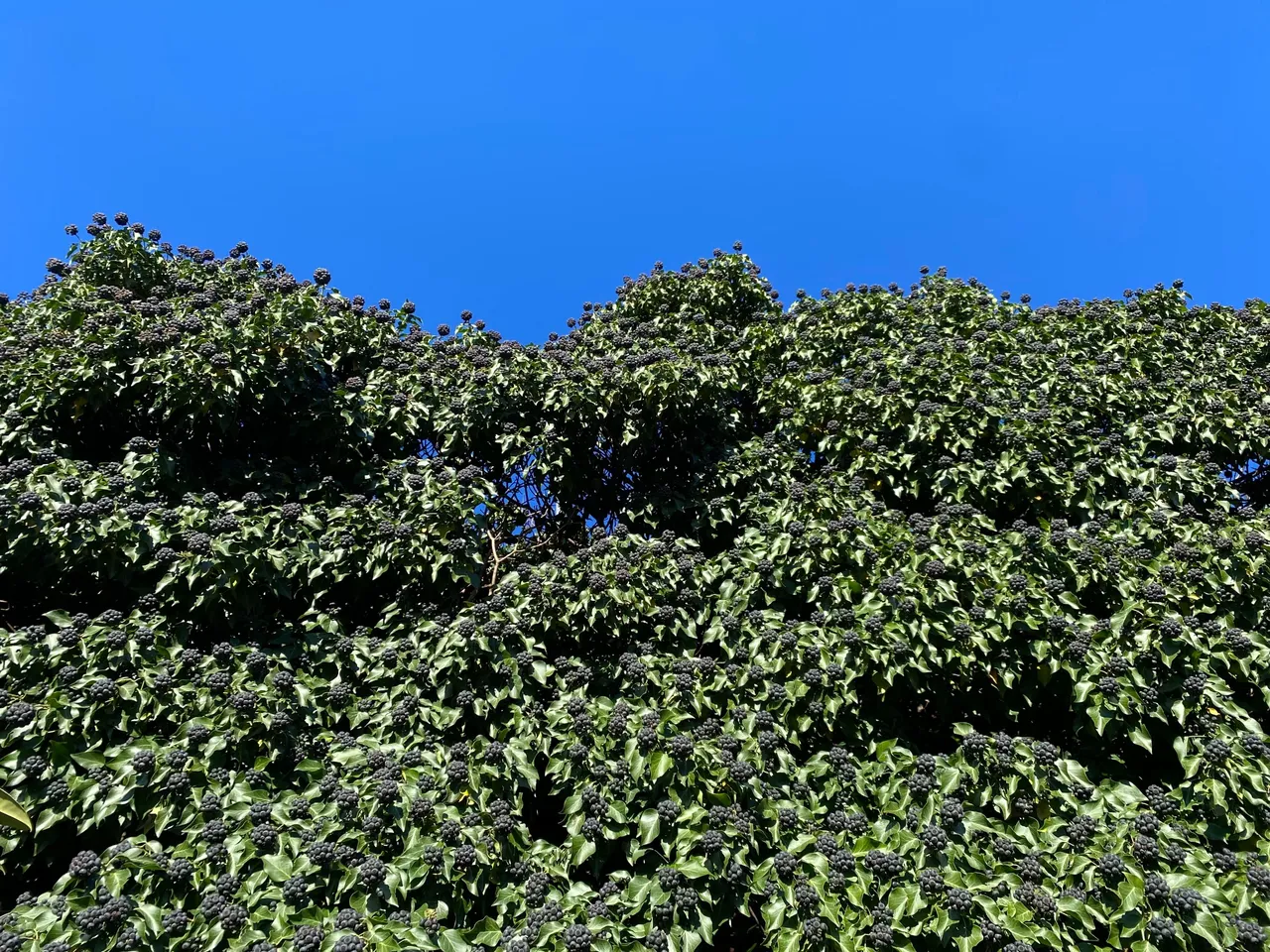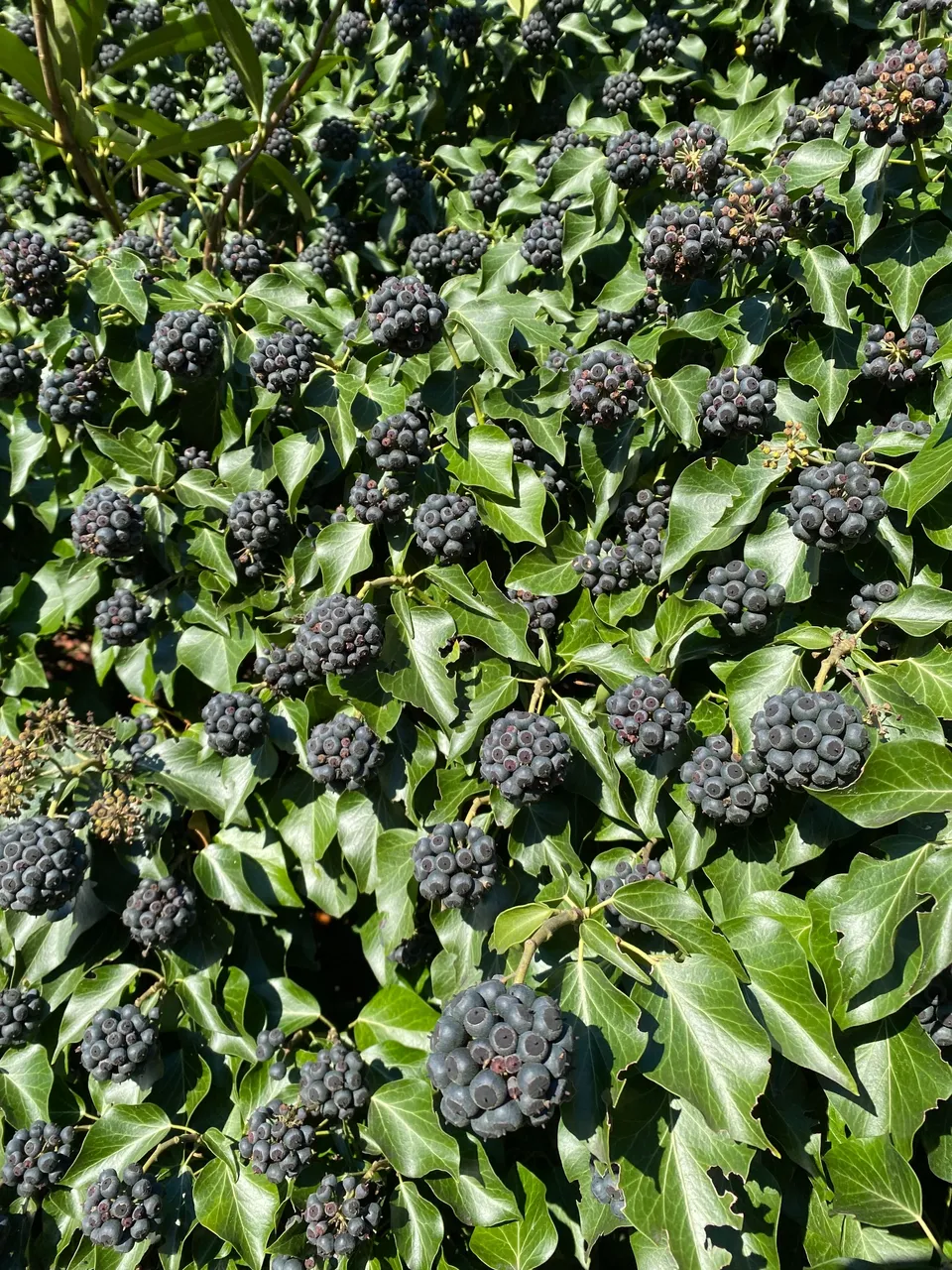The Hedera Helix

The freezing cold has been replaced with high winds. We've been hit by two storms back to back. The only positive about that, and there's always a positive isn't there, is the fact that they brought some warmth with them. The winds thus must have come from the warmer parts of the Atlantic Ocean, perhaps even from the shores of West/North West Africa.

These most be the most resilient berries in the world. They're out in full force this winter. I'm sure the birds are happy about this. Actually do the birds actually eat these? I honest have never seen birds eating these berries. In summer, they're very happy to eat my strawberries, and they can often be seen camping out in my garden after a good feast, leaving me some manure in the process.
I actually looked this up and apparently the Ivy (Hedera Helix) has the following usefulness to wildlife:
"Nectar, pollen and berries of ivy are an essential food source for insects and birds, especially during autumn and winter when little else is about. It also provides shelter for insects, birds, bats and other small mammals. The high fat content of the berries is a nutritious food resource for birds and the berries are eaten by a range of species including thrushes, blackcaps, woodpigeons and blackbirds.
Ivy is particularly important to many insects before they go into hibernation. Some of the main insect species which forage on the nectar and pollen of ivy are bees, hoverflies and common wasps.
It is an important food plant for some butterfly and moth larvae such as holly blue, small dusty wave, angle shades and swallow-tailed moth."
Peace & Love,
Adé